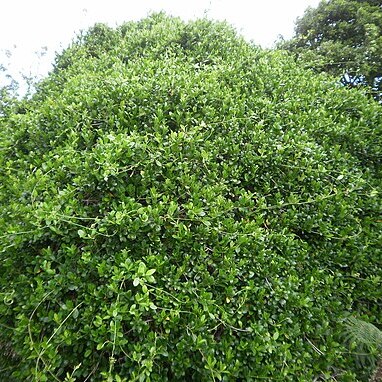Scrambling shrub. Leaves usually with a waxy epidermis and secondary veins parallel; 7-25 mm broad, oblong elliptic or narrowly ovate; blade 16-90 x 5-35 mm. Flowers: pollen gathered in 4 pollinia attached to a soft, pale corpuscle; style apex equalling or shortly exceeding anther tips, entire; corolla lobes white-pubescent inside, white yellow or greenish white; Sep.-Feb. Fruit a follicle.
Scrambling shrub. Leaves 7-25 mm broad, oblong, elliptic or lanceolate. Corolla lobes white-pubescent inside. Style apex equalling or shortly exceeding anther tips, entire. Flowers white, yellow or greenish white.
Scrambler or scandent shrub to 10 m; sap milky. Leaves opposite, lanceolate to ovate-lanceolate, 6-25 mm wide, shiny dark green. Flowers finely hairy above, corona lobes erect and incurved over anthers.

